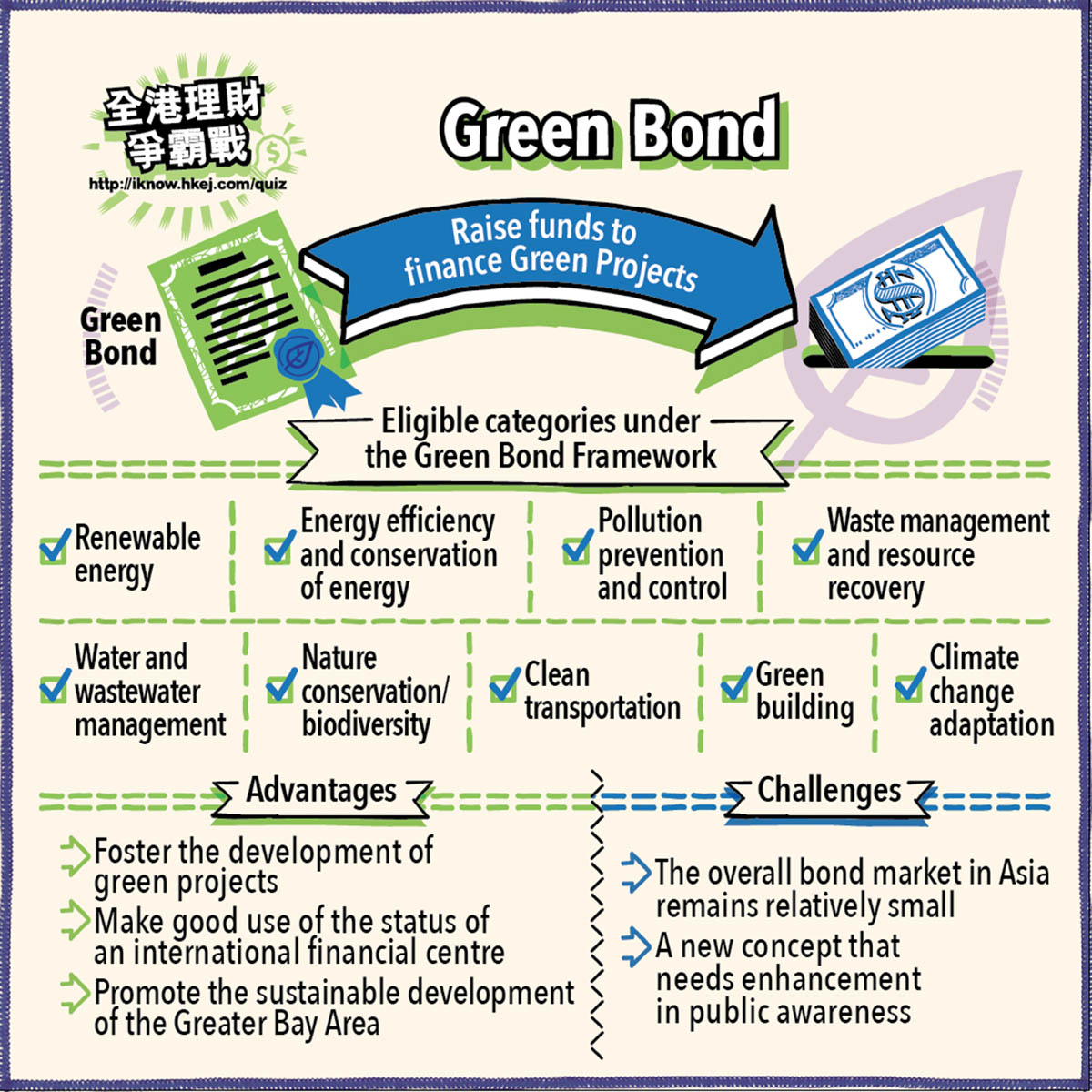
Green bonds are fixed-income financial instruments, and the funds raised are mainly used for project financing or refinancing of concepts such as improving the environment, addressing climate change, and transitioning to a low-carbon economy. In general, green bonds can be issued by governments, financial institutions (such as banks) as well as non-financial enterprises, etc.
To promote the development of the green bond market, the Hong Kong government began issuing green bonds in 2019, mainly targeting global institutional investors. To promote public engagement and benefit from green and sustainable development projects in Hong Kong , the government has issued the inaugural retail green bond in May 2022 for public’s subscription in Hong Kong.
The Green Bond Programme is the government's initiative to promote the development of green finance in Hong Kong, especially the green bond market. The government's move is to support sustainable development and combat climate change, provide a benchmark for green bond products in the market, set a good example for other potential green bond issuers, and enhance public awareness of green finance.
The HKSAR Government published its Green Bond Framework in 2019 (the "Framework") and updated it in February 2022, which is an important part of the green bond programme. The updated Framework can reflect HKSAR’s latest climate commitments and strategy, and align with the latest international standards and practices in the green bond market. The Framework consists of the following four core components:
I. Use of proceeds
According to the updated Framework, the proceeds of Green Bond issued by the government will be used exclusively to finance or refinance projects that fall under one or more of the “Eligible Categories”, including the new category “Climate change adaptation”. The sums raised will fund a wider variety of green projects not limited to public works projects, and further support Hong Kong in the transition to the low carbon economy. There are nine categories of eligible projects:
II. Project Evaluation and Selection
The evaluation and selection of eligible projects are under the responsibility of the Steering Committee on the Government Green Bond Programme. The Committee is chaired by the Financial Secretary and comprises the Secretary for Financial Services and the Treasury, the Secretary for the Environment, and Deputy Chief Executive of the Hong Kong Monetary Authority. The committee is primarily responsible for overseeing the implementation of the government's green bond programme.
III. Management of Proceeds
The proceeds of each Green Bond will be credited to the Capital Works Reserve Fund, administered by the Financial Services and the Treasury Bureau pending earmarking to Eligible Projects. The Financial Services and the Treasury Bureau will maintain an internal register for each batch of green bonds, recording key information including transaction date, the principal amount of proceeds, maturity date, and interest or coupon, the International Securities Identification Number, and other information.
IV. Reporting
The Financial Services and the Treasury Bureau will publish a Green Bond Report (the “Report”) on an annual basis, explaining the allocation of the proceeds of green bonds. The Report mainly discloses a summary of green bonds (such as green bonds issued and outstanding at the reporting date and summary terms, etc.), the allocation of funds raised by each batch of green bonds, and the environmental (and social impacts where relevant) resulting from eligible projects. After the report is reviewed and approved by the Steering Committee, it will be uploaded to the HKSAR Government Bonds website.
Under this program, the HKMA has so far assisted the government in successfully issuing institutional and retail green bonds worth more than US$9 billion, covering various currencies and tenors.
After learning about green and sustainable finance, Little Thrifty realises that these products can not only bring stable returns to investors but also help improve the environment. Therefore, Little Thrifty hopes to benefit his family with green bond investments. Given his father prefers earning stable returns with lower risks, Little Thrifty understands that retail green bonds issued by the Government are fixed income assets. Investors can get the prescribed coupon rate as investment return. Generally speaking, bonds have stable returns and lower risks than other investment products (such as stocks), so they are ideal for investors who prefer low risk. So Little Thrifty’s father has subscribed retail green bonds issued by the Government.